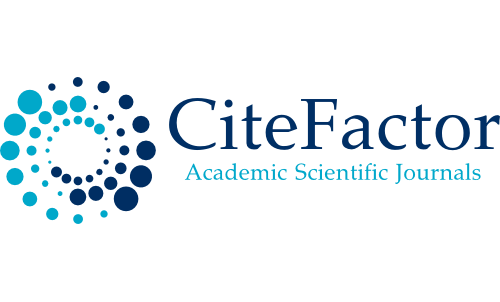PENGGUNAAN USER PERSONA UNTUK EVALUASI DAN MENINGKATKAN EKSPEKTASI PENGGUNA DALAM KEBUTUHAN SISTEM INFORMASI AKADEMIK
DOI:
https://doi.org/10.31598/sintechjournal.v3i2.587Abstract
Human-Computer Interaction (HCI) is a scientific field to determine user characteristics or so-called persona. HCI describes a system that must be easy to use, provides security to users, easy to learn and has usability. The purpose of the study was conducted to obtain various perspectives on the use of software in the InfoKHS University of Muhammadiyah Malang (UMM) academic system according to user characteristics so that the design of software requirements is expected to be representative of various types of users. The HCI assessment is carried out in software development (SD) focusing on the elicitation of needs. Focus on using user methods. As an analysis of user needs. Qualitative data were analyzed based on country hypotheses obtained for the first time in this research phase. In this study, a User Persona was done with an iterative method to ensure each phase was validated. The results show that iterations are needed several times to get the use of detailed cases diagram of each user's needs.
Downloads
References
[2] A. Safwat and M. B. Senousy, “Addressing Challenges of Ultra Large Scale System on Requirements Engineering,†Procedia Comput. Sci., vol. 65, no. Iccmit, pp. 442–449, 2015, doi: 10.1016/j.procs.2015.09.116.
[3] T. Alsanoosy, M. Spichkova, and J. Harland, “The influence of power distance on requirements engineering activities,†Procedia Comput. Sci., vol. 159, pp. 2394–2403, 2019, doi: 10.1016/j.procs.2019.09.414.
[4] R. Chen, Q. Wang, and W. Xu, “Mining user requirements to facilitate mobile app quality upgrades with big data,†Electron. Commer. Res. Appl., vol. 38, no. August, p. 100889, 2019, doi: 10.1016/j.elerap.2019.100889.
[5] H. Scherer, A. Albers, and N. Bursac, “Model Based Requirements Engineering for the Development of Modular Kits,†Procedia CIRP, vol. 60, pp. 145–150, 2017, doi: 10.1016/j.procir.2017.01.032.
[6] B. Ferreira, T. Conte, and S. D. J. Barbosa, “Eliciting Requirements Using Personas and Empathy Map to Enhance the User Experience,†in Proceedings - 29th Brazilian Symposium on Software Engineering, SBES 2015, 2015, doi: 10.1109/SBES.2015.14.
[7] K. Schäfer et al., “Survey-based personas for a target-group-specific consideration of elderly end users of information and communication systems in the German health-care sector,†Int. J. Med. Inform., vol. 132, no. February, p. 103924, 2019, doi: 10.1016/j.ijmedinf.2019.07.003.
[8] F. Anvari, D. Richards, M. Hitchens, M. A. Babar, H. M. T. Tran, and P. Busch, “An empirical investigation of the influence of persona with personality traits on conceptual design,†J. Syst. Softw., 2017, doi: 10.1016/j.jss.2017.09.020.
[9] B. Ferreira, S. Barbosa, and T. Conte, “Creating personas focused on representing potential requirements to support the design of applications,†in ACM International Conference Proceeding Series, 2018, doi: 10.1145/3274192.3274207.
[10] C. W. O. Connor, “A persona-centered approach to understanding adoption barriers of electric vehicles,†pp. 1–67, 2016.
[11] S. T. Acuña, J. W. Castro, and N. Juristo, “A HCI technique for improving requirements elicitation,†in Information and Software Technology, 2012, doi: 10.1016/j.infsof.2012.07.011.
[12] A. M. Turner, B. Reeder, and J. Ramey, “Scenarios, personas and user stories: User-centered evidence-based design representations of communicable disease investigations,†J. Biomed. Inform., vol. 46, no. 4, pp. 575–584, 2013, doi: 10.1016/j.jbi.2013.04.006.
[13] M. K. Sabariah, P. I. Santosa, and R. Ferdiana, “Requirement elicitation framework for child learning application - A research plan,†ACM Int. Conf. Proceeding Ser., pp. 129–133, 2019, doi: 10.1145/3305160.3305195.
[14] J. Zheng, W. Xing, G. Zhu, G. Chen, H. Zhao, and C. Xie, “Profiling self-regulation behaviors in STEM learning of engineering design,†Comput. Educ., vol. 143, p. 103669, 2020, doi: 10.1016/j.compedu.2019.103669.
[15] K. Curcio, T. Navarro, A. Malucelli, and S. Reinehr, “Requirements engineering: A systematic mapping study in agile software development,†J. Syst. Softw., vol. 139, pp. 32–50, 2018, doi: 10.1016/j.jss.2018.01.036.
[16] J. Jia, X. Yang, R. Zhang, and X. Liu, “Understanding software developers’ cognition in agile requirements engineering,†Sci. Comput. Program., vol. 178, no. March, pp. 1–19, 2019, doi: 10.1016/j.scico.2019.03.005.
[17] T. Miaskiewicz and K. A. Kozar, “Personas and user-centered design: How can personas benefit product design processes?,†Des. Stud., vol. 32, no. 5, pp. 417–430, 2011, doi: 10.1016/j.destud.2011.03.003.
[18] B. Warin, C. Kolski, and C. Toffolon, “Living persona technique applied to HCI education,†in IEEE Global Engineering Education Conference, EDUCON, 2018, doi: 10.1109/EDUCON.2018.8363208.
[19] J. A. Yani, K. Kartasura, K. Sukoharjo, J. Tengah, and S. H. Pharmacy, “PENERAPAN SISTEM INFORMASI PENJUALAN DENGAN PLATFORM E-,†SINTECH (Science Inf. Technol., vol. 3, no. 1, pp. 59–70, 2020.
Downloads
Published
How to Cite
Issue
Section
License
Copyright (c) 2020 Kharisma Muzaki Ghufron, Wahyu Andhyka Kusuma, Fauzan

This work is licensed under a Creative Commons Attribution-NonCommercial-ShareAlike 4.0 International License.
Copyright in each article belongs to the author.
- The authors admit that SINTECH Journal as a publisher who published the first time under
 Attribution-NonCommercial-ShareAlike 4.0 International (CC BY-NC-SA 4.0) License.
Attribution-NonCommercial-ShareAlike 4.0 International (CC BY-NC-SA 4.0) License. - Authors can include writing separately, regulate distribution of non-ekskulif of manuscripts that have been published in this journal into another version (eg sent to respository institution author, publication into a book, etc.), by recognizing that the manuscripts have been published for the first time in SINTECH Journal















1.png)




